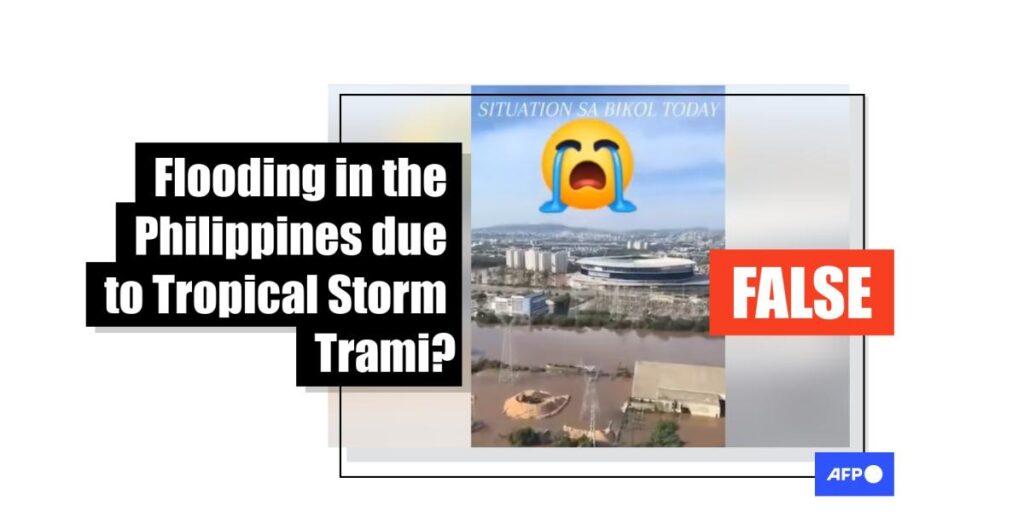Tropical Storm Trami made a devastating impact on the northern Philippines in October, leading to the destruction of various regions and the tragic loss of at least 125 lives. The storm, characterized as the deadliest natural disaster to hit the Southeast Asian nation in 2023, forced nearly a million people to seek refuge either in evacuation centers or with relatives. The disaster, particularly severe in the Bicol region, left many residents trapped and awaiting assistance, often stranded on their rooftops or in their upper floors as floodwaters encroached on their homes. Reports from the Philippines’ disaster agency highlighted the urgency of the situation, as the storm’s heavy rains led to widespread flooding, displacing thousands and necessitating immediate aid.
In the aftermath of the storm, misinformation proliferated on social media, exacerbating the challenges faced by those following the unfolding crisis. A widely circulated video, claiming to show the flood-stricken areas of Bicol, gained significant traction on platforms like Facebook and TikTok, garnering hundreds of thousands of views. Text overlaying the video claimed to depict the “situation in Bicol today” and included distressing calls for prayer in support of the affected residents. However, investigations revealed that the footage actually showed severe flooding in southern Brazil, specifically captured in May 2024, rather than the aftermath of Tropical Storm Trami.
The misattribution of footage was traced back to a user named Uesley Moreira, who posted the original video of the flooding incident in Porto Alegre, Brazil. The video, which gained attention due to its dramatic imagery of submerged urban areas, was wrongly linked to the Bicol region, thereby misleading many viewers regarding the real-time conditions in the Philippines. This case exemplifies the manner in which social media can propagate false narratives, particularly during natural disasters when information is rapidly generated and consumed. It is essential to verify information sourced from social media, especially in the wake of such catastrophic events.
Experts noted that the severe flooding in Brazil, which occurred earlier in the year and resulted in the deaths of at least 170 people and the displacement of over 600,000 individuals, was largely exacerbated by climate change and the phenomena of El Niño. The footage shared in the misleading posts not only represented a different event altogether but also highlighted the ongoing issues related to environmental changes that affect weather patterns globally. The historic flooding in Brazil drew attention to the broader implications of climate change, which is increasingly becoming a risk factor for extreme weather events.
The situation in the Philippines, while dire, was further complicated by the spread of misinformation. As residents in Bicol awaited critical assistance, the spread of outdated or incorrect information could hinder the relief efforts necessary for recovery. Fact-checking organizations, including AFP, have actively worked to debunk false claims related to storm damage in the Philippines and other regions, reinforcing the importance of accurate reporting in the midst of crises. Ensuring that reliable information reaches those who need it most is crucial during such catastrophic events, where lives depend on timely aid and assistance.
In conclusion, the case of Tropical Storm Trami illustrates the dual challenge posed by natural disasters: the immediate need for disaster response and the ongoing threat of misinformation. Verification of claims and images shared on social media is vital to ensure that accurate information is disseminated. The long-lasting impacts of climate change necessitate greater public awareness and preparedness for future weather events, as well as robust systems of communication for disaster management. Moving forward, it remains essential for communities, both globally and locally, to collaborate in combatting misinformation and providing effective support to those affected by natural disasters.

